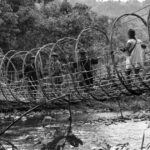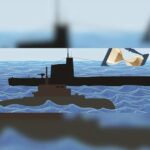
SOURCE: MONEY CONTROL
For hundreds of years, India flourished on the banks of the Volga. From shops in the great trading city of Astrakhan, rented for just 12 roubles a year, men with names like Ramdas Dzhasuev and Talaram Alimchandov, the historian Stephen Dale teaches us, sold cotton, silks, spices, furs and silver. From their small enclave on Volodarskogo Street — where a two-storey building still stands — Indian traders ran great networks reaching out across Central Asia and into Kazan and Moscow.
In 2016, Prime Minister Narendra Modi signed a deal meant to rebuild the foundation of that great web of enterprise: an $85 million port at Iran’s Chabahar; a railway line to link it to Iran’s network into Central Asia; and giant aluminium and urea plants. The previous year, the prime minister had spoken of creating a “vast network of physical and digital connectivity that extends from Eurasia’s northern corner to Asia’s southern shore”.
This week, though, Iran began work on the railway line on its own, citing delays in New Delhi delivering on its $150 million investment commitment, and the unwillingness of Indian firms to risk United States sanctions by participating in the work. Though Iran has made clear India is still welcome to invest in the project, there’s growing uncertainty that will happen any time soon.
Following 9/11, optimism grew on tapping Afghanistan’s mineral resources to rebuild the country’s war-ravaged state and civil society. Even as China successfully bid for control of copper mines at Mes Aynak, near Bamiyan, New Delhi secured the rights to iron oxide deposits at Hajigak. The rail line through Iran was to bring this iron ore to plants to be processed into aluminium, and then transported through the port of Chabahar.
India’s initial ambitions had been more modest. Facing resistance from Pakistan to even limited trade — Islamabad even blocked the supply of high-protein biscuits for Afghan children — New Delhi had seen that the port could bypass the Karachi-Khyber Pass route.
For New Delhi, investing in Iran also made strategic sense. India sought access to the country’s vast hydrocarbon reserves. Arch-competitor China had invested over $25 billion in everything from Iran’s energy sector to its highways, power infrastructure and train systems since 2005, helping it beat back sanctions imposed by the United States. India’s funding was small, in comparison, but at least gave it a toe-hold.
Investing in Iran made perfect sense — but, like so many well-laid strategic plans, it was soon undone by circumstances no-one had anticipated.
First, President Donald Trump dismantled the nuclear-weapons deal put together by the five permanent members of the United Nations Security Council and Germany — the so-called P5+1 — to rein in Iran’s nuclear-weapons programme. In essence, Iran had agreed to stop enriching its fissile-material stockpile to weapons-grade in return for an end to economic sanctions. President Trump, though, was persuaded by Saudi Arabia and Israel that the deal didn’t do enough to check Iran’s missile capabilities.
The end of the P5+1-Iran nuclear deal brought a renewed round of sanctions, exposing Indian companies involved in Chabahar to risks they were unwilling to take. European and Chinese corporations, too, scaled back their dealings with Iran.
Perhaps more important, President Trump announced an end to the United States’ open-ended commitment to the post-9/11 Afghan state, and signed a controversial peace deal with the Taliban. For New Delhi, this opened up the prospect of an Afghanistan characterised by persistent ethnic-religious civil war, or domination by Islamabad, the Taliban’s key patron.
Even China, despite its expansive resources, had been unable to commence mining operations at Mes Aynak; the idea that Hajigak might presently be safe for India seemed increasingly unrealistic.
The problems with the idea of land-bridge linking India, through Chabahar, to Central Asia, go even deeper. In 2016, Prime Minister Modi had argued that routing India-Europe cargo could “bring down the cost and time of the cargo trade to Europe by about 50 percent”. From the experience of Chinese trains to Europe, though, it has become clear this might not be true: using well-established maritime networks has proved far cheaper than the new, trans-Asian land routes.
In a 2018 paper, transport economist Peter Bucsky noted that shipping a standard container from Europe to China by sea cost about €1,000–€1,500, to €5,000 by train (and above €20,000 by air). Though some types of high-value products were shifting to the faster overland system, he pointed out, “railway transport is still negligible for the trade between China and the European Union, and there is no sign that it will change in the future”.
Even though Indian trade with the Central Asian states has expanded significantly, the costs of shipping through Iran are likely to significantly exceed those of using well-established logistics networks now running overland through ports in Asia or Europe.
In 2014, a study by the Federation of Freight Forwarders’ Associations of India tested the land routes to Europe and Central Asia through Iran’s Bandar Abbas. It cost $3,132, and took 33 days, to shepherd a 20-foot container from Mumbai to Baku in Azerbaijan — more expensive, and not much faster, than sending cargo through Rotterdam, in Holland.
Talaram Alimchandov and Ramdas Dzhasuev succeeded not because the resources of nation-states were committed to their great trading networks, but because governments stayed out of the way. Following a meeting with an Indian trade delegation led by Anbu Ram, the Emperor Pyotr Alekseevich — or Peter the Great — even allowed the merchants to govern their disputes according to their own customs, not his laws.
Indian strategic investments should, likewise, serve private-sector need — not seek to shape or guide it. In this case, the country needs to count itself lucky it isn’t stuck with a colossal white elephant. Even in 2016, the idea of building a land route linking India with Europe had elements of grandiosity. In the event, the project ended up mired in the competing ambitions of the United States and China, and the swirl of tensions between Iran and its West Asian competitors.
The induced coma the Chabahar project has been placed in, thus, marks no great reverse. Trade with Afghanistan, minuscule as it is, can continue to be conducted through the port; there is no economic case, though, for the construction of a railway line. Indeed, Pakistan — likely under United States pressure — has reopened Afghan trade transit through the Wagah border, suspended in the midst of the COVID-19 crisis.
As it considers the future, New Delhi needs to carefully match the ends it seeks with the means it has. True, Chabahar could have been a reasonable, win-win outcome for all those concerned — but in the world we inhabit, win-win outcomes aren’t always preferred to zero-sum games. New Delhi must beware participating in geopolitical battles where it is unable to either significantly influence events or insulate itself from their outcomes.






